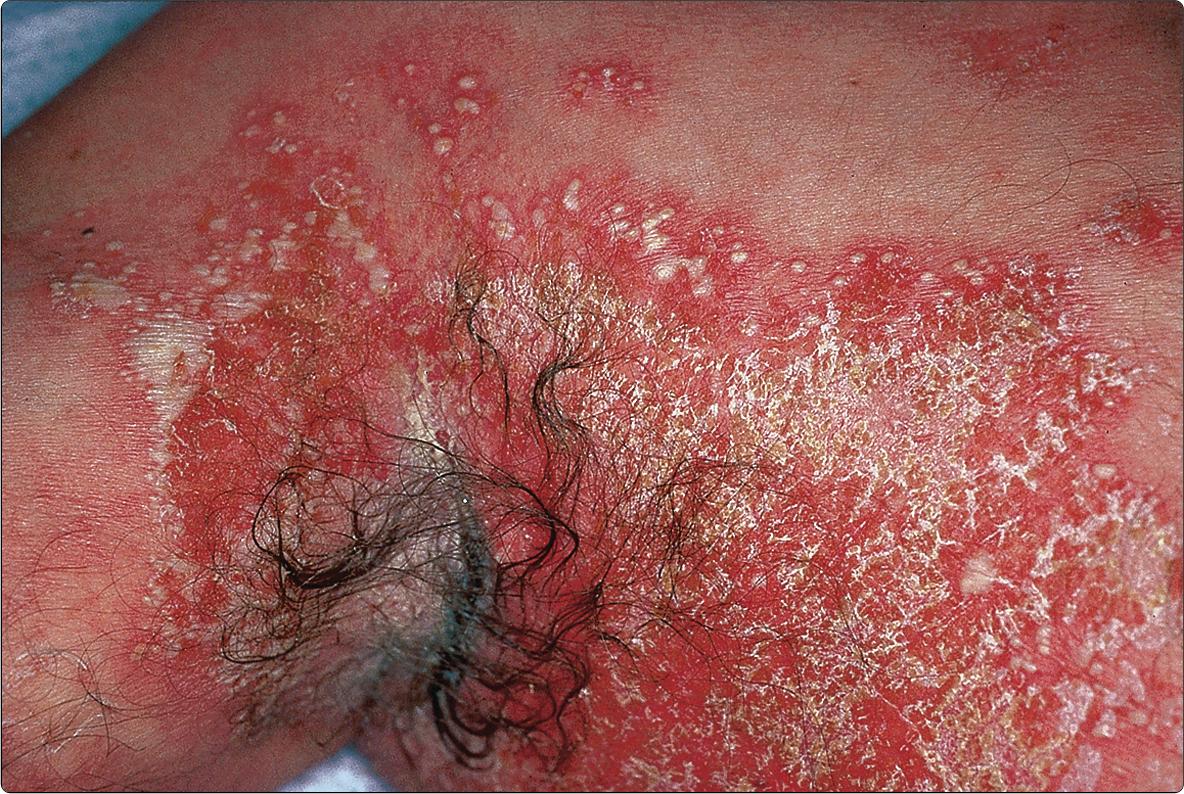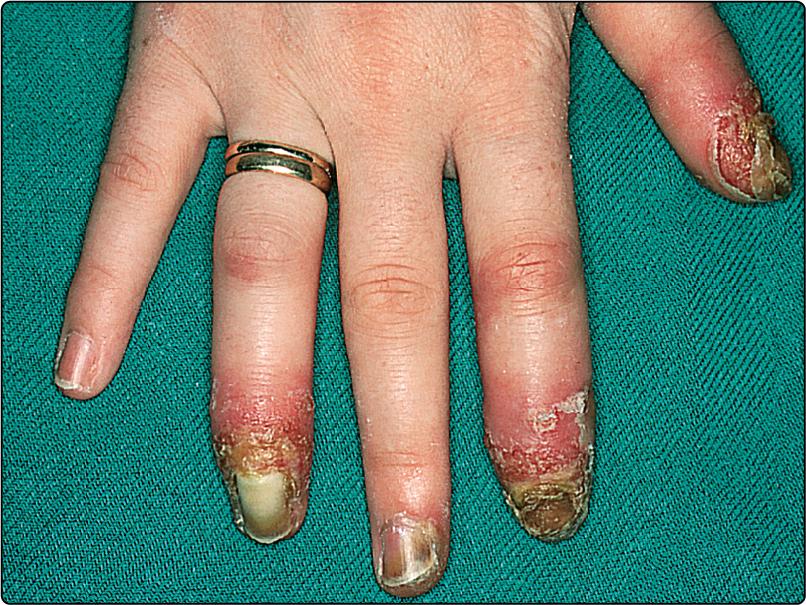Physical Address
304 North Cardinal St.
Dorchester Center, MA 02124
Research has confirmed psoriasis to be an immune-mediated inflammatory disease, with associated genes involved in immune regulation ( Fig. 18.1 ). These recent discoveries have allowed the pharmaceutical industry to specifically design biologic drugs that work in psoriasis and in other diseases where there is improved comprehension of the pathomechanisms. Biologics block specific inflammatory mediators or cells (see Chapter 61 ). Other systemic drugs are assumed to modify these mechanisms but their modes of action seem less well understood in comparison with the biologics.
Systemic treatment may be required for psoriasis that is:
Life-threatening, as in the erythrodermic or generalized pustular forms ( Fig. 18.2 )

Unresponsive to adequate topical treatment
So extensive that it is unlikely to respond to topical therapy (and fulfils Psoriasis Area Severity Index [PASI] and Dermatology Life Quality Index [DLQI] criteria for severity), as in widespread plaque psoriasis
Restricting the ability to work, as in acrodermatitis continua ( Fig 18.3 ).

Benefits must be weighed against side effects. The use of potentially toxic drugs is justified by their ability to transform a patient’s life from severely restricted to nearly normal. The type of psoriasis can influence the appropriateness of the treatment to be given. For example, palmoplantar psoriasis might respond well to acitretin ( Table 18.1 ). Phototherapy and photochemotherapy are outlined on page 134. Psoralen plus ultraviolet A (PUVA) is considered a systemic treatment as psoralen is taken by mouth.
| Type of psoriasis | Options for systemic treatment |
|---|---|
| Extensive plaque | PUVA or Re-PUVA |
| Methotrexate, ciclosporin | |
| Biologics | |
| Palmoplantar | Acitretin, PUVA or Re-PUVA |
| Generalized pustular | Acitretin, methotrexate, ciclosporin |
| Biologics | |
| Erythrodermic | Acitretin, methotrexate, ciclosporin |
| Biologics |
If the criteria to start systemic treatment are met, it is usual to consider the use of methotrexate first before proceeding to other systemic agents. This is provided there are no contraindications to methotrexate and no specific pointers to the use of an alternative as the first-line systemic drug.
Become a Clinical Tree membership for Full access and enjoy Unlimited articles
If you are a member. Log in here